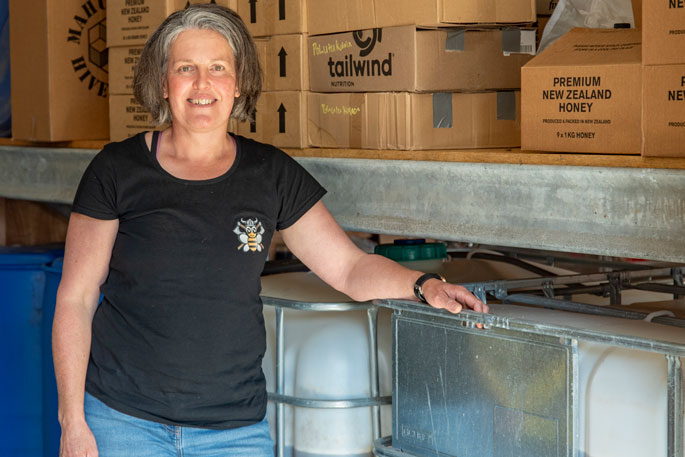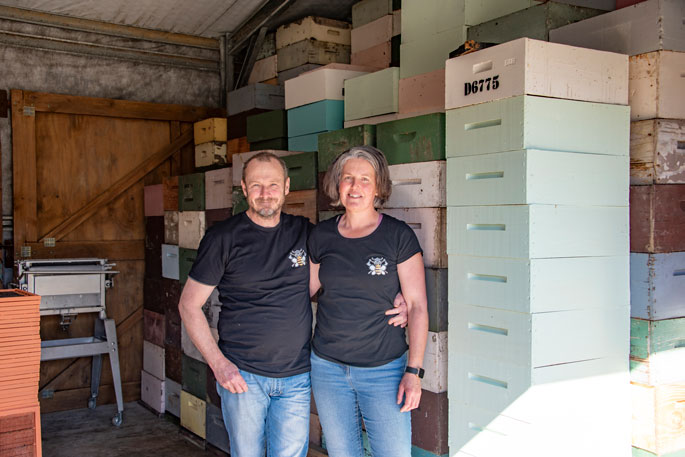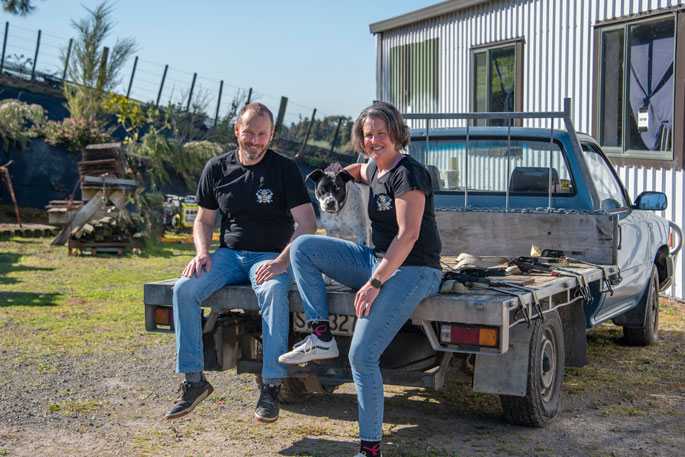The word mead conjures up the scene of a drunken friar rolling on the floor of Sherwood Forest or a group of raucous medieval knights clanking metal tankards.
It’s something from another era but there are several places making mead in New Zealand, including The Brewed Nest in the Bay of Plenty.
Beekeepers Craig Lovell and Maree Paynter live with their two sons on a 2.75 hectare block in Whakamarama.
“We are both interested in bees, and I’ve been beekeeping for a while. We set up our own company, Bee First Apiaries, 2010,” says Craig.
At the time there was money in honey production and the couple both worked fulltime producing honey and pollinating local orchards. Craig often works as a boatbuilder during the winter months.
The apiary winters 450 hives which are split out to 1200 hives for the summer.
The introduction of strict DNA testing on honey by the government, losing the overseas markets and the Covid-19 lockdowns soon made honey alone as a product not financially viable.
“We couldn’t sell the honey, so we had to store it. I’ve always been fascinated by honey mead as a product. I’d previously approached a mead maker at a market and discussed how mead was made, and the lockdowns were the perfect opportunity to try,” says Maree.
Making mead
Mead is a fermentation of raw honey and water. As bees gather nectar they are also gathering pollen which contains yeast, so everything required for fermentation is already in the honey.
Maree’s first attempt was not the finish she was after. She describes it as “very alcoholic and syrupy which tasted like a quality degreaser with a side of paint remover”.
During lockdown, Maree was messaged by renowned New Zealand winemaker Michael Sweetlove, whose interest was spiked in a Welsh meadery, and he was delighted to help them perfect their mead.
“I mix raw honey that has a low water content and highly filtered water to make the ‘must’ or ‘wort’ which is the base product for the mead. This is added to 1000 litre food grade IBC containers we use as fermentation chambers.
“The proportions of honey and water depends on alcohol content required from the end product. A 50/50 mix would result in a very strong alcoholic mead.”
 Maree Paynter with some of her fermenting honey mead. Photo: Catherine Fry.
Maree Paynter with some of her fermenting honey mead. Photo: Catherine Fry.
The ‘must’ sits in the fermentation chamber and the temperature rises in the must as yeast reacts with the glucose and fructose in the honey to make alcohol.
“You can see the carbon dioxide bubbles being produced and our caps have an outward air bleed.”
As every honey is different and therefore the yeast in that honey’s pollen is different, each batch is monitored carefully but the minimum time for fermentation would be four months.
“I take regular Brix readings which tells me the amount of sugar is left available for further fermentation. It needs to be kept warm but as temperatures vary a little, different yeasts kick in.”
Maree uses a hydrometer to check alcohol levels. She also tastes it daily and admits to sometimes wondering what she’s doing as in the early stages it tastes awful.
“My palate has adjusted, and I can identify which honey is in the mead. We can tweak flavours by adding different honeys during the process. We are traditional mead makers and don’t add anything after fermentation has ended.”
The Brewed Nest mead
When Maree is happy with the taste, they “rack off” the mead. This involves pumping out the middle layer of the fermentation chamber taking care not to pick up too much of the “lees” (spent pollen and yeast at the bottom) or the beeswax pieces floating on the top.
“We always end up with a bit of lees in the bottom of the bottle but it’s not a bad thing, it holds flavour. The lees is sought after by chefs to make meat marinades and desserts,” says Maree.
The couple do blind trials with their meads and ask the opinions of friends and neighbours before deciding on their recipe for bottling. To avoid contamination, this all happens within 12 hours of opening the fermentation chamber.
“It’s all go for the family as our sons join us to bottle and label.”
 Craig Lovell and Maree Paynter with the empty hives waiting to be used in the summer. Photo: Catherine Fry.
Craig Lovell and Maree Paynter with the empty hives waiting to be used in the summer. Photo: Catherine Fry.
Maree describes mead as similar to dessert wine with regard to body. “It’s definitely not syrupy or liqueur-like. It has 13.5 % alcohol, similar to wine and a natural, sweet, botanical flavour from the flowers the bees made the honey from.”
The couple now have a purpose-built meadery on site and offer seasonal varieties of honey and aged traditional honey meads.
“We offer meadery tours with tasting, and a Bee Experience Tour where people can learn about bees and beekeeping,” says Maree.
The next step is obtaining an export licence to take their mead overseas.
 Craig Lovell has 1200 hives to look after in the height of summer. Photo: Catherine Fry.
Craig Lovell has 1200 hives to look after in the height of summer. Photo: Catherine Fry.



0 comments
Leave a Comment
You must be logged in to make a comment.